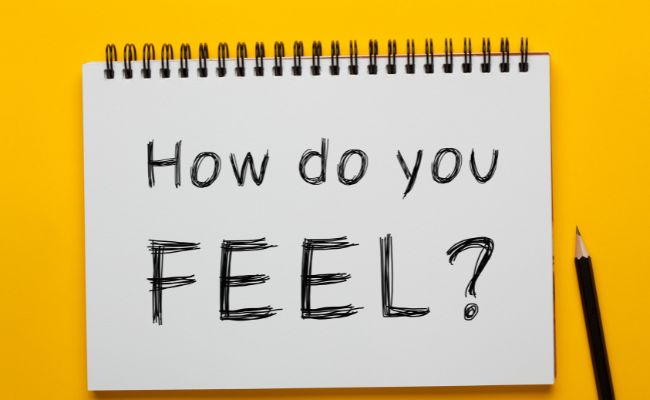Developing Resilience & Labeling Emotions with Vered Kogan
“Our outer world is a reflection of our inner world.” – Vered Kogan
I had the pleasure of speaking with Vered Kogan, a leading mindset and resilience expert, certified executive coach, and Founder and CEO of the Momentum Institute.
Vered assists individuals and teams in learning how to adapt to obstacles and build resilience to thrive in all areas of life.
We discuss:
- Defining resilience
- The power of labeling how we feel
- The meaning of coherence
Defining resilience

What do you think of when you read the word resilience? Maybe you envision white-knuckled determination, getting up from a fall, or bouncing back from trauma and drastic changes.
Though those images are not inaccurate, resilience has a softer side—according to the Institute of HeartMath, resilience stands for the capacity to prepare for, recover from, and adapt to adversity.
Being resilient is not about ignoring the pain or the stress, it’s about recognizing them and learning how to embrace those emotions while still moving forward.
Vered knows a trick or two for cultivating resilience outside of challenging environments. “That's one of the things that a lot of people don't know.” Vered shares, “That there are things they can do in advance of stressful situations, to prevent that accumulation of stress.”
We can respond to stress in a way that speaks to our goals.
Recharging our inner battery

When we think of resilience as the amount of energy we have stored in our battery—the vitality we have available physically, mentally, and emotionally—we can understand what drains and charges us.
“When the battery is full, because you’ve utilized certain techniques and built some resilience in your body, you have a better capacity when challenges happen to remain calm, to be able to think clearly and make better decisions, and essentially be in control of your emotions,” Vered explains.
With a full battery, composure wins against overreaction. We all wake up with a certain amount of energy that depletes throughout the day. When that energy is low, we struggle to draw strength when we need it—maybe when we’re with family, running a presentation, or making any number of decisions in demanding situations.
“When we are in that depleted state, we go back to previous patterns that sometimes are not the best ones.” Vered continues.
There are ways to keep our battery as charged as we can and avoid reverting to less-ideal patterns, and, like most self-improvement, progress starts with compassion. Every habit, routine, and reaction has an origin. Understanding that origin is part of what helps unlock new routes.
“I believe there are maladaptive behaviors, little parts of us frozen within times of trauma.” Vered shares, “When it comes to resilience, it's really important to pause throughout the day and label how we feel, to really acknowledge all parts of us.”
The power of labeling how we feel

What are you feeling right now? Think about it. Are you carrying tension anywhere in your body? Pin-point any nagging thoughts, and trace them to your emotions. Label whatever you find in simple terms—sadness, restlessness, anxiety, peace, happiness, contentment. Let them be what they are.
“What happens is that then there's more energy going to the front part of our brain so that we can think more clearly.” Vered points out, referencing what happens when we consciously acknowledge our emotions. “We need to accept all parts of ourselves, including how we feel, and give ourselves love and compassion. That's what builds the most capacity for resilience.”
Once we label our emotions, we need to set an intention. How do we want to feel? Do we want to choose to feel something different or sustain what we have? Are we looking to intensify a feeling?
When we build that rapport with our unconscious mind, we become more tuned-in to different changes throughout the day in our energy and are less numb to what's going on inside of our hearts.
We could all afford to be more gentle with ourselves. Part of reaching a point of compassion comes from recognizing the four domains of resilience, doorways that increase our ability to have a positive outlook, more flexibility, and cultivate resilience.
Physical flexibility
This doorway focuses on working out, building endurance and strength—moving our bodies and creating healthy routines for that movement.
Emotional flexibility
Our ability to have a more positive outlook, to self-regulate our emotions, label them, and the capacity to shift and reset—making a point of categorizing our feelings and learning the art of gracefully pressing forward.
Spiritual flexibility
This domain refers to our values and our commitment to what is most important to us—determining if we’re honoring our values or other people's values and beliefs instead of our own.
Mental flexibility
Mental flexibility pertains to our attention span, our ability to focus and incorporate multiple points of view—embracing diverse solutions and ideas.
The meaning of coherence

In the middle of the four domains is coherence. Synchronization. Like the vision of a high-performing rowing team or a perfectly coordinated dance routine.
“When we're in a coherent state, it's when our mind, heart, and emotions are all in a state of harmony, almost like a beautiful orchestra,” Vered explains. “When you have that state of balance between the heart and mind, the emotions, the body—everything is working together, we're able to take charge of ourselves and maintain our composure in challenging situations. Because we have more energy.”
Vered guide us through the HeartMath Quick Coherence®technique:
Step 1. Focus on your heart, put your hand over it if needed, imagine your breath flowing in and out of your chest area, breathe slower, and find a comfortable rhythm.
Step 2. Make a sincere attempt to re-experience a regenerative feeling (something positive) and let yourself travel to a time when that feeling was strongest.
Try this exercise three to four times a day and see if you can feel the difference in the connections between your conscious state and your emotions.
Our perception is often based on how we feel. If we're feeling in sync with our emotions, situations look brighter, and resilience rises.
Where do you want to see more resilience in your life?
Be sure to check out Vered’s full episode for more tips on resilience, and learn more at Vered’s website!








